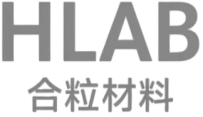Hastelloy C-276, a nickel-molybdenum-chromium superalloy, is universally recognized for its exceptional resistance to diverse corrosive media. With its ultra-low carbon content (≤0.01%) and high concentrations of molybdenum (15–17%) and chromium (14.5–16.5%)-3, it delivers unparalleled performance in acidic, alkaline, and chloride-rich environments—from chemical reactors to fusion energy systems.
Key Performance Metrics vs. Competing Alloys
| Property | C-276 | 316L Stainless Steel | Application Impact |
|---|---|---|---|
| Corrosion Resistance | Resists wet chlorine, oxidizing chlorides-3 | Prone to pitting in chlorides | 10x longer lifespan in FGD scrubbers |
| Tensile Strength (Room Temp) | ≥690 MPa-3 | ≥485 MPa | Higher load capacity in structural components |
| Max Service Temperature | 1000°C-4 | 870°C | Stable in pyrolysis furnaces |
| Ductility (Elongation) | ≥40%-3 | ≥40% | Excellent formability for complex parts |
2. Technical Breakthroughs: Decoding C-276’s Stability Mechanism
2.1 Composition-Driven Corrosion Immunity
-
Nickel (57% balance): Forms a stable FCC matrix, providing inherent resistance to reducing media-3.
-
Molybdenum (15–17%): Enhances resistance to localized corrosion (pitting/crevice) in chloride solutions-3.
-
Chromium (14.5–16.5%): Enables stability in oxidizing conditions (e.g., hot nitric acid)-3.
2.2 “As-Welded” Performance Revolution
The alloy’s ultra-low carbon (≤0.01%) and silicon content inhibit carbide precipitation in heat-affected zones (HAZs)-10. This permits post-weld usage without heat treatment—a critical advantage for field-fabricated structures like chemical tanks and pipeline systems-10.
2.3 Recent Industrial Advancements (2025)
China’s中国科学院金属研究所 (Institute of Metal Research) achieved ton-scale production of high-purity C-276 base strips for second-generation high-temperature superconducting (REBCO) tapes-2-7. These strips, with thicknesses of 0.046 mm and lengths >2000 m, exhibit surface roughness <20 nm and tensile strength >1900 MPa at cryogenic temperatures-2-7—enabling breakthrough applications in nuclear fusion magnets-2-7.
3. Application Spectrum: From Chemical Plants to Fusion Reactors
3.1 Chemical & Petrochemical Engineering
-
Reactors and Mixers: Handles sulfuric, hydrochloric, and phosphoric acids at elevated temperatures-3-8.
-
PVC Production: Uniquely resists wet chlorine gas and hypochlorite solutions-3.
3.2 Energy & Environmental Systems
-
Flue Gas Desulfurization (FGD): Absorber towers and dampers withstand sulfurous and chlorinous gases-3-8.
-
Nuclear Fusion: C-276 base strips serve as structural substrates for REBCO superconducting tapes in confinement magnets-2-7.
3.3 Emerging Technologies
-
Wastewater Treatment: Components in advanced oxidation process (AOP) systems resist peroxide-based oxidants-8.
-
Pharmaceutical Bioreactors: Compatibility with sterile cleaning agents (e.g., peracetic acid)-10.
4. Procurement & Processing Guidelines
4.1 Supplier Qualification Checklist
-
Certify compliance with ASTM B575/B574 (U.S.) or GJB standards (China)-1-5.
-
Verify mill test reports for interstitial element control: C≤0.01%, S≤0.0005%, P≤0.002%-7.
4.2 Welding & Fabrication Protocols
-
Methods: Use GTAW (TIG) or GMAW (MIG) with ERNiCrMo-4 filler-3.
-
Parameters: Maintain interpass temperature ≤120°C and heat input ≤1.5 kJ/mm to avoid sensitization-3.
-
Post-Weld: Acid cleaning with HNO₃/HF solutions to restore corrosion resistance-3.
4.3 Cost Optimization Strategy
-
Price Monitoring: Track LME nickel prices (primary cost driver) and Shanghai Nonferrous Metal Network quotes-1-5.
-
Lifecycle Cost Analysis: Prioritize initial quality over price—C-276’s longevity often yields 5-year TCO savings vs. alternatives-6.
5. Market Trends & Supply Chain Insights
-
Demand Surge: Chemical and energy sectors drive 12% YoY growth; fusion energy projects amplify need for high-purity strip-2-7.
-
Localization Progress: Chinese producers now supply 80% of domestic demand, cutting lead times to 6–8 weeks-2-7.
-
Price Range: ¥150–300/kg (China) to $80–120/kg (international), varying with form and quantity-6.
6. SEO-Optimized Technical FAQ
C-276 Alloy: Engineer’s Q&A
Q: How does C-276 compare to C-22 in oxidizing media?
A: C-22 offers superior resistance to hot nitric acid and oxidizing salts, but C-276 provides better cost-performance in reducing/chloride environments[citation:6].
Q: Can C-276 be used in as-welded condition?
A: Yes—its low carbon content minimizes HAZ sensitization, allowing direct deployment after welding[citation:10].
Q: What are the key specs for fusion energy base strips?
A: Thickness ≤0.05 mm, length ≥1000 m, roughness ≤20 nm, and tensile strength ≥1300 MPa at 77K[citation:2][citation:7].
Conclusion: Corrosion Engineering Redefined
From chemical processing to foundational roles in commercial fusion energy, Hastelloy C-276 continues to set the benchmark for corrosion-resistant alloys. With supply chain localization slashing costs and breakthrough applications emerging, this superalloy’s versatility positions it as a cornerstone of 21st-century industrial infrastructure.
